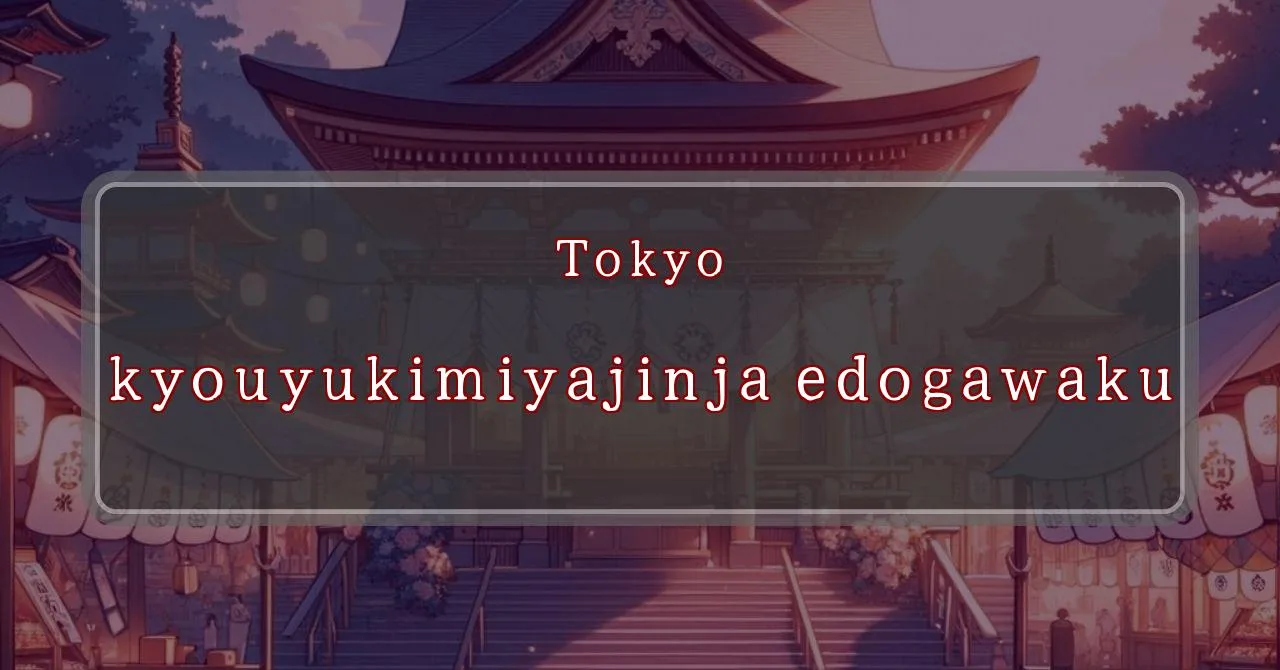Divine illumination at Okinomiya Shrine
Basic Information
Okinomiya Shrine is a Shinto shrine located in Edogawa Ward, Tokyo, Japan. It is dedicated to the deities Amaterasu Omikami, Katori Jingū, and Kashima Jingū.
- Address: 18-26 Okinomiyacho, Edogawa-ku, Tokyo 133-0042
- Phone Number: 03-3655-8980
- Access: 13-minute walk from Koiwa Station on the JR Chuo-Sobu Line
- Festival Days: September 16th (Mon), 2024
Main Events and Attractions of the Festival
The Okinomiya Shrine Festival is an annual event that takes place on September 16th. The festival features a variety of events and attractions, including:
Mikoshi Procession
The mikoshi procession is the main event of the festival. A mikoshi is a portable shrine that is carried through the streets by a group of people. The mikoshi is believed to be inhabited by the deity of the shrine, and the procession is a way to show respect to the deity and to pray for good fortune.
Lion Dance
The lion dance is a traditional Japanese dance that is often performed at festivals. The dance is performed by two people, one wearing a lion head and the other wearing a lion body. The lion dance is believed to bring good luck and to ward off evil spirits.
Kagura
Kagura is a traditional Japanese ritual dance that is performed by shrine maidens. The dance is accompanied by music and singing, and it is believed to bring good luck and to purify the shrine.
Food Stalls
There are a variety of food stalls at the festival, selling a variety of Japanese dishes. Some of the most popular dishes include yakitori (grilled chicken), takoyaki (octopus balls), and taiyaki (fish-shaped cakes filled with sweet bean paste).
Other Attractions
In addition to the main events and attractions listed above, the festival also features a variety of other attractions, such as games, rides, and live music.
Blessings and Deities
Okinomiya Shrine is dedicated to the deities Amaterasu Omikami, Katori Jingū, and Kashima Jingū. Amaterasu Omikami is the sun goddess and the most important deity in the Shinto pantheon. Katori Jingū and Kashima Jingū are two of the oldest and most revered shrines in Japan, and they are both dedicated to the god of war.
- Amaterasu Omikami: The sun goddess and the most important deity in the Shinto pantheon
- Katori Jingū: One of the oldest and most revered shrines in Japan, dedicated to the god of war
- Kashima Jingū: One of the oldest and most revered shrines in Japan, dedicated to the god of war
Origin and History
The exact date of Okinomiya Shrine’s establishment is unknown, but it is believed to have been founded in the Kamakura period (1185-1333). The shrine was originally called Okinomiya, which means “the shrine of the inner palace.” This name was given to the shrine because it was located near the palace of the local lord.
- Founded in the Kamakura period (1185-1333)
- Originally called Okinomiya, meaning “the shrine of the inner palace”
- Renamed 興之宮神社 in the Edo period (1603-1868)
Tips and Notes for Visitors
Here are some tips and notes for visitors to Okinomiya Shrine:
- The shrine is open from 9:00 AM to 5:00 PM every day.
- Admission to the shrine is free.
- There is a parking lot available for visitors.
- The shrine is a popular destination for weddings and other ceremonies.
- Visitors are asked to be respectful of the shrine and its surroundings.
Parking Information
There is a parking lot available for visitors to Okinomiya Shrine. The parking lot is located next to the shrine, and it can accommodate up to 50 cars. The parking fee is 500 yen per day.
Popular Stalls and Food Carts in Recent Years
| Type of Stall | Description |
|---|---|
| Takoyaki | A staple at Japanese festivals. Characterized by a crispy outside and a creamy inside. |
| Jaga Butter | A simple yet popular snack of hot potatoes lavishly topped with melted butter. |
| Baby Castella | Small castella cakes, sweet and fluffy treats enjoyed by children and adults alike. |
| Grilled Ayu with Salt | Fresh ayu fish grilled whole with salt, a savory taste of Japanese summer. |
| Shaapin | A unique gourmet item influenced by foreign cuisine, with a chewy skin wrapping the filling. |
| Okonomiyaki | A Japanese grilled dish where you often choose your own ingredients for a personalized flavor. |
| Cotton Candy | A fluffy, sweet snack that’s extremely popular with children. |
| Chocolate Banana | A banana coated in chocolate, a fun and visually appealing dessert. |
| Kushiyaki | Various types of ingredients skewered and grilled, an easy-to-enjoy snack. |
| Yakisoba | Fried noodles mixed with a special sauce, a fast food favorite in Japan. |



